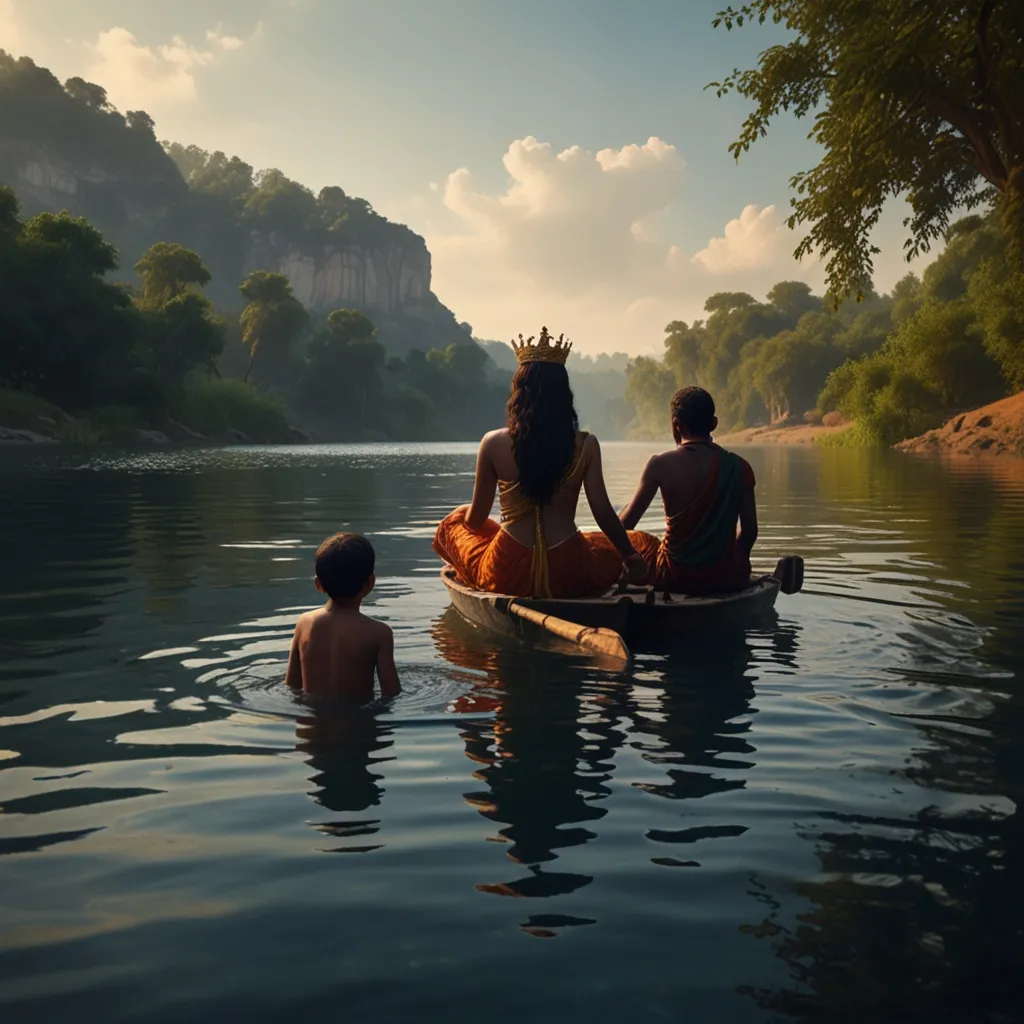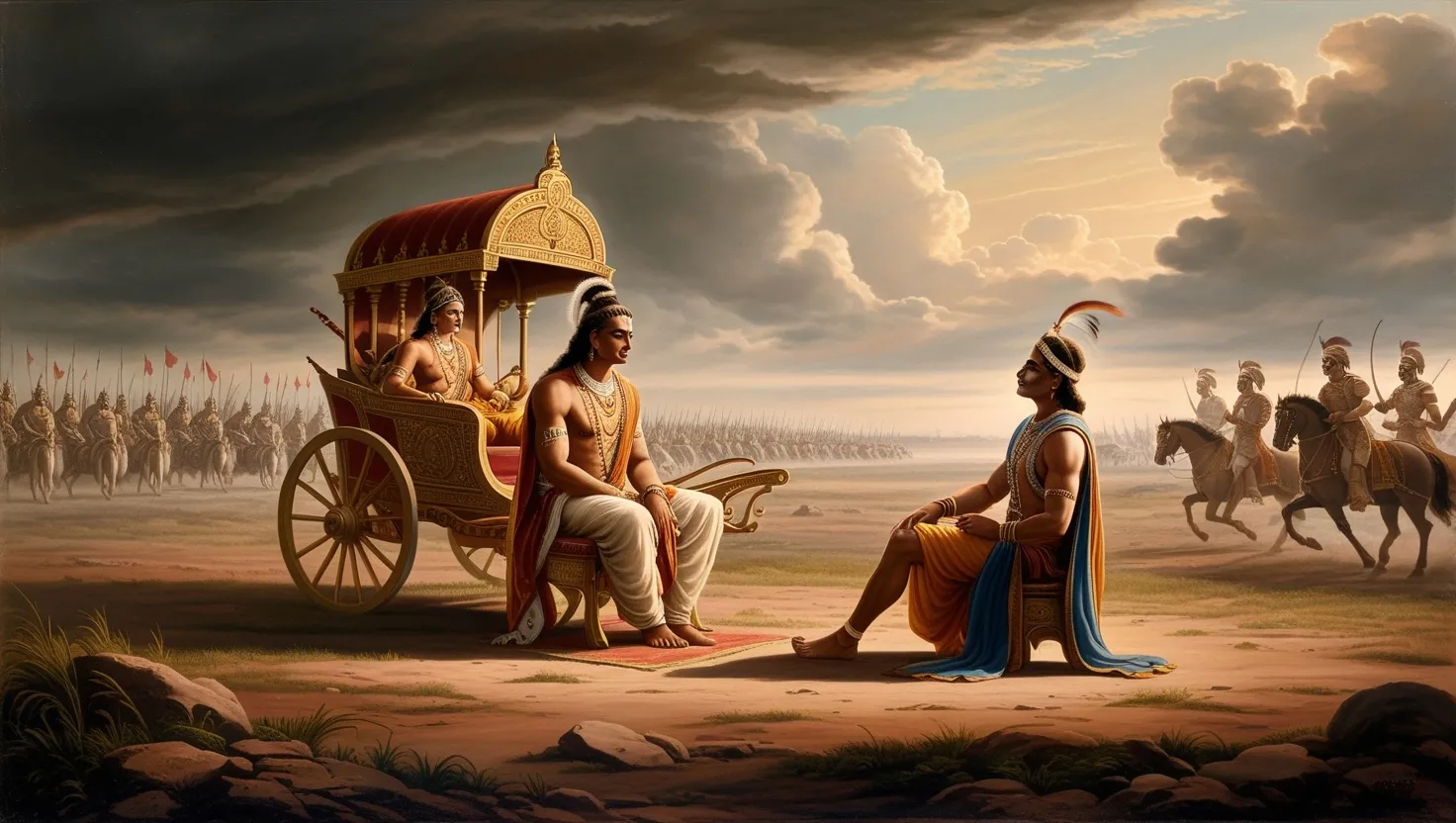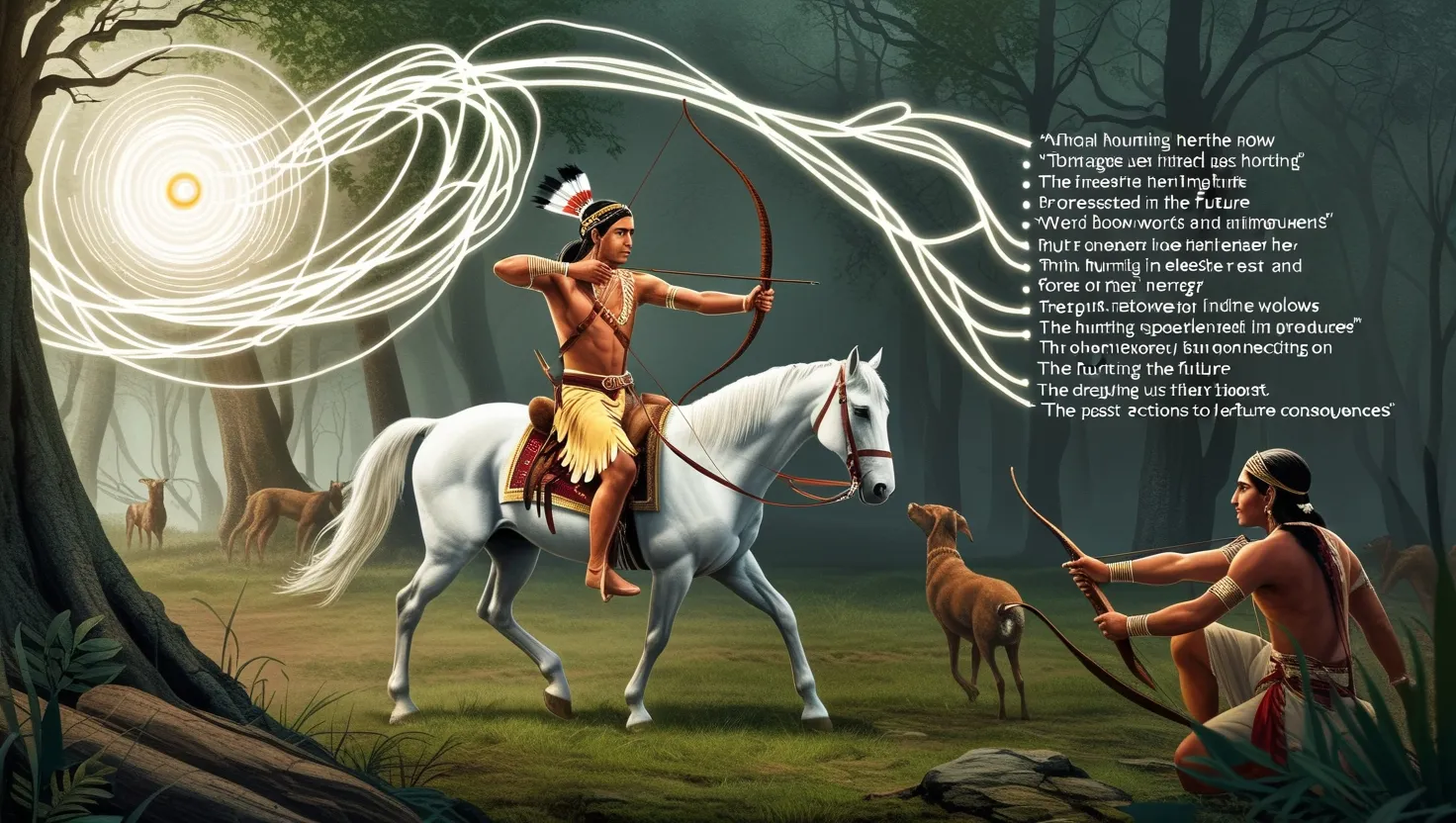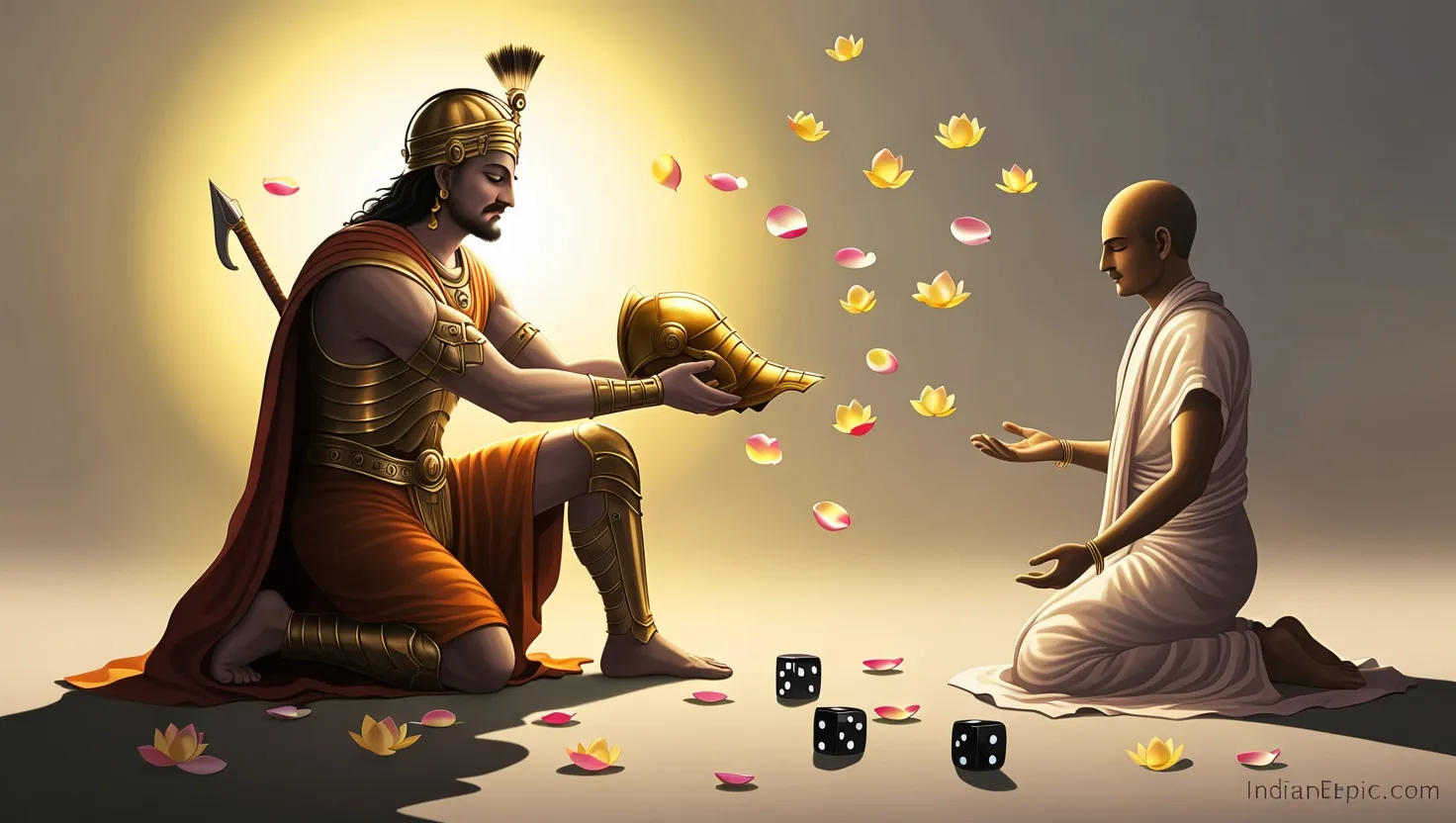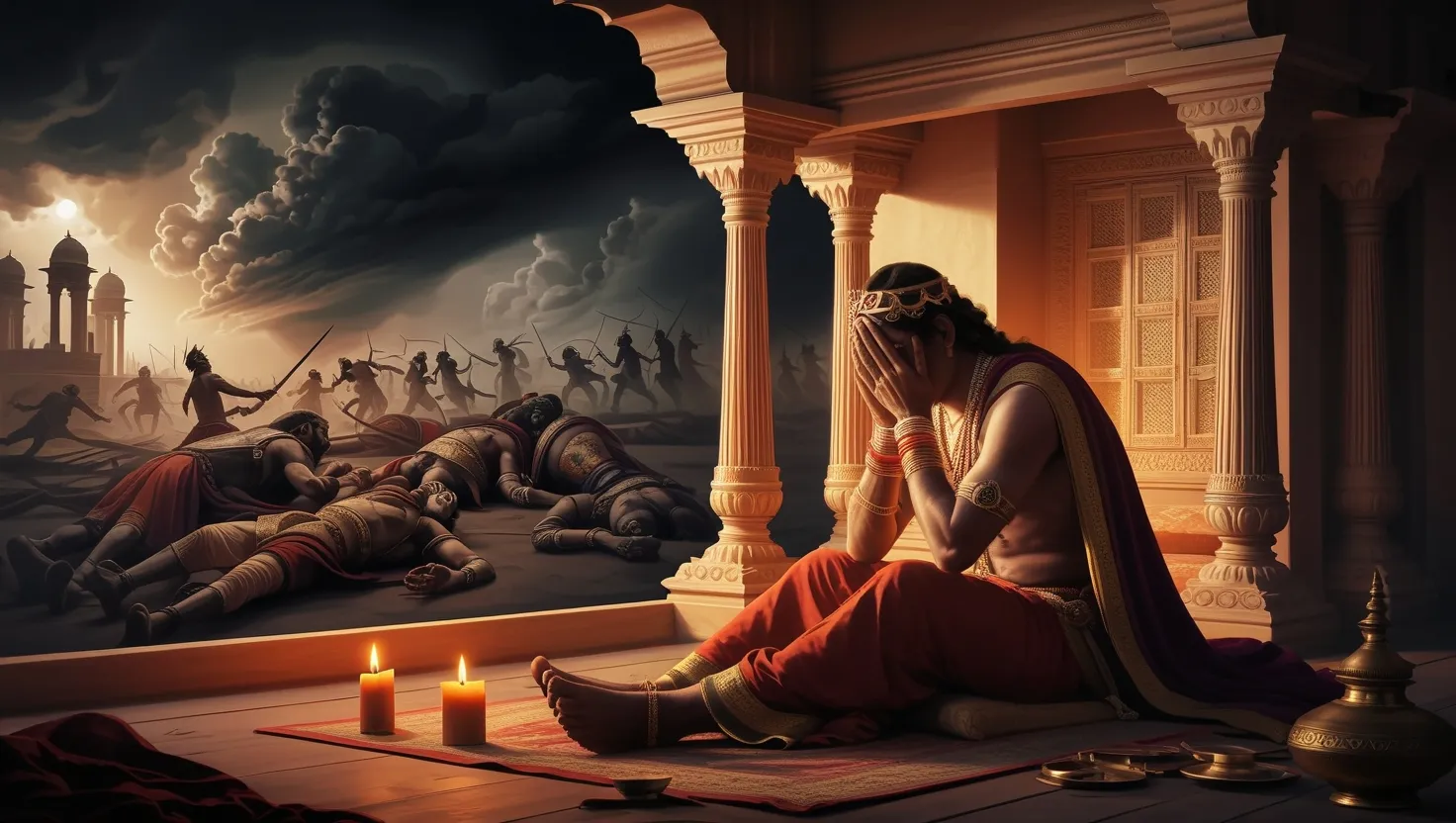In the vast expanse of Indian mythology, few stories captivate us more than that of King Shantanu and the enchanting river goddess, Ganga. This tale, dense with love, sacrifice, and divine purpose, offers timeless lessons wrapped up in the mystique of ancient lore.
Shantanu was the celebrated ruler of Hastinapura, a kingdom known for its splendor and prosperity. Life was as serene as could be until one day, while taking a leisurely stroll by the Ganges River, Shantanu’s eyes fell upon a woman of mesmerizing beauty. This wasn’t just any woman; she was Ganga, the divine embodiment of the river. Enchanted by her elegance, Shantanu was quick to propose marriage. Ganga, however, agreed on a curious condition: he must never question her actions, no matter how bizarre they might appear.
Blinded by his love for her, Shantanu readily accepted her terms. They got married and lived in blissful harmony. Ganga, with her pristine character and grace, only deepened Shantanu’s affection. But soon, their joy turned into a series of tragic events. After the birth of their first child, Ganga took the infant to the river and drowned him. Horrified but bound by his promise, Shantanu kept silent.
This horrifying ordeal took place six more times. Each time a child was born, Ganga would take them to the river and drown them. Though grief-stricken, Shantanu adhered to his vow and never questioned her. On the birth of their eighth child, Shantanu could no longer hold back his anguish. “Stop! Why do you commit such heinous acts? You are as mad as you are beautiful,” he cried out.
In response, Ganga revealed the truth. She was, indeed, the goddess Ganga, and her actions were part of a divine plan. The children were the reincarnations of the eight Vasus, elemental gods cursed to be born as humans. By drowning them, Ganga was liberating them from their earthly form. The eighth child, Devavrata, was spared and whisked away by Ganga to the heavens for royal training.
Though Shantanu was heartbroken by her departure and the loss of their children, he continued to rule. His life forever marked by this divine encounter. In later years, while walking along the river, he stumbled upon a young boy who turned out to be his son, Devavrata. Recognizing his mortal father, Devavrata used his divine powers to disappear. Shantanu implored Ganga to reveal herself and their son, resulting in Devavrata being established as the rightful heir.
But the twists of Shantanu’s story didn’t end there. He fell in love again, this time with Satyavati, an adopted daughter of a fisherman. Her father agreed to the marriage but set stringent conditions: their child must inherit the throne. Devavrata, out of unyielding loyalty to his father, renounced his claim to the throne and vowed lifelong celibacy, earning him the revered name Bhishma.
Ganga’s story is a beautiful tapestry woven with love, loss, duty, and divine choreography. It’s not just a tale of a divine being but also reflects deeper truths about karma and its inexorable laws. Even within a heavily patriarchal framework where women were often expected to be subservient, Ganga stood as an emblem of autonomy and divine will. She was a being with a larger purpose, far beyond the roles of wife and mother.
Furthermore, the saga of Shantanu and Ganga underscores the intricate nature of relationships. Even the strongest bonds can be riddled with misunderstandings and conflict. Shantanu’s lack of comprehension regarding Ganga’s actions may have led to their separation, but it also set into motion a cascade of events that would shape the destiny of Hastinapura.
The divine descent of Ganga to Earth adds yet another layer to her rich narrative. Sage Bhagiratha’s penance to bring her down to Earth illustrates the depth of devotion and the extent of divine intervention. To mitigate the ferocity of her celestial descent, Lord Shiva channeled her flow through his matted locks. This act itself was filled with obstacles, including the ire of Sage Jahnu who, having had his meditative peace disturbed by the turbulent river, absorbed her entire flow into his water pot. Through Bhagiratha’s prayers, Ganga was released and could fulfill her purpose, bringing salvation to Bhagiratha’s ancestors.
The Ganges River, which Ganga personifies, holds a cherished spot in the religious and daily life of millions. It’s believed to course through all three realms—Heaven, Earth, and Hell—embodying the spiritual lifeline for India. Beyond its physical sustenance, providing water for agriculture and fishing industries, the river is central to spiritual rituals. The Ganga Aarti, a daily twilight ceremony, fills the air with the enchanting scent of flowers and incense, captivating the souls of those who bear witness.
In essence, Ganga’s mythological journey teems with lessons and inspiration. Her story, a complex interweaving of love, duty, and divine purpose, stands as a testament to the power of understanding and respecting actions that may seem unfathomable. Through her marriage to Shantanu and her descent from the heavens, Ganga remains an enduring symbol of feminine strength and the timeless spirit of the Ganges River.
These ancient tales do more than entertain; they resonate with the intricate and often perplexing experiences of life, offering wisdom that transcends through the ages. So, next time the Ganges flows peacefully or roars with vigor, remember the compelling narrative of Ganga, the divine goddess whose journey from the heavenly abode to the earthly realms continues to touch hearts and inspire minds.
